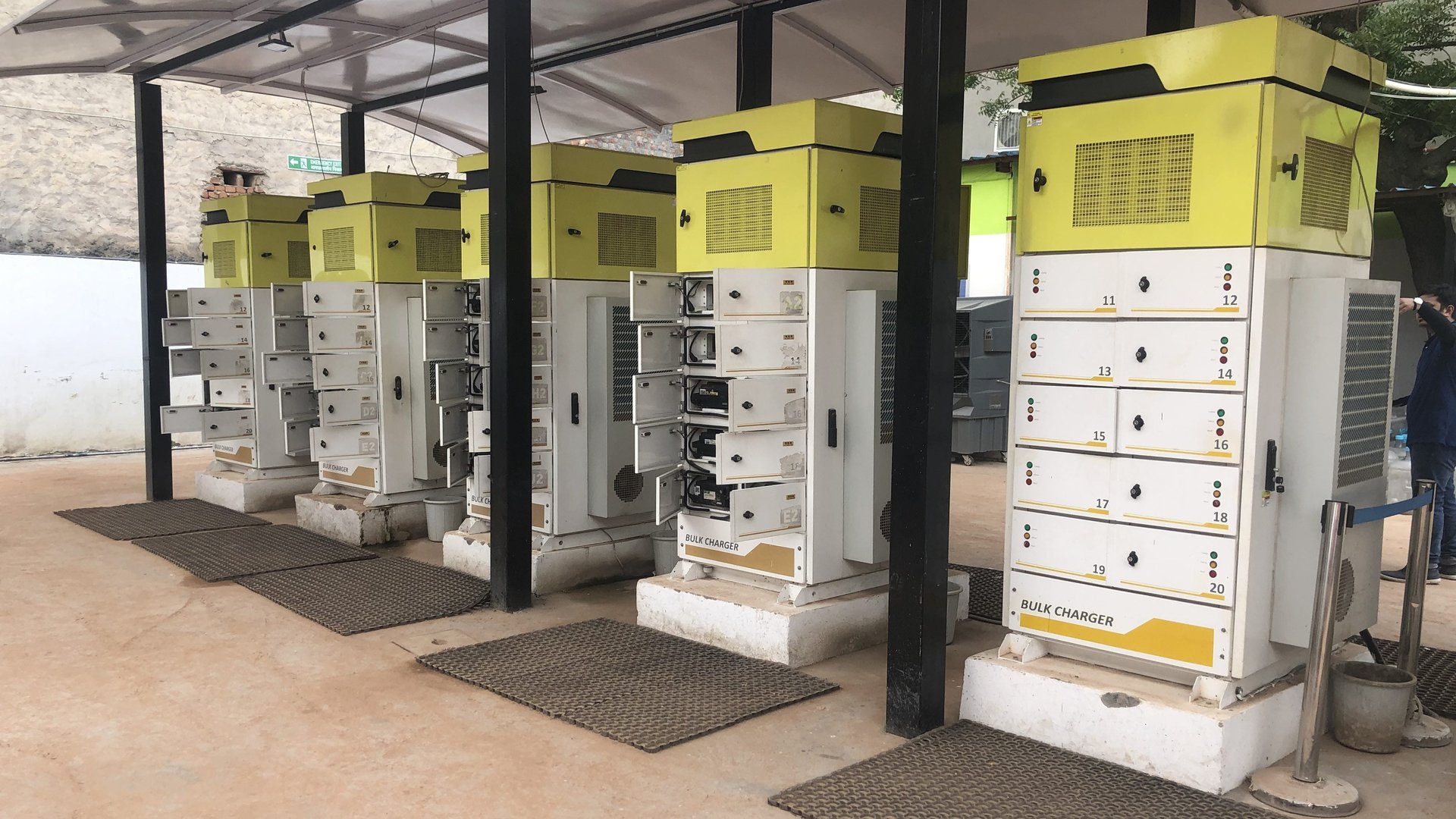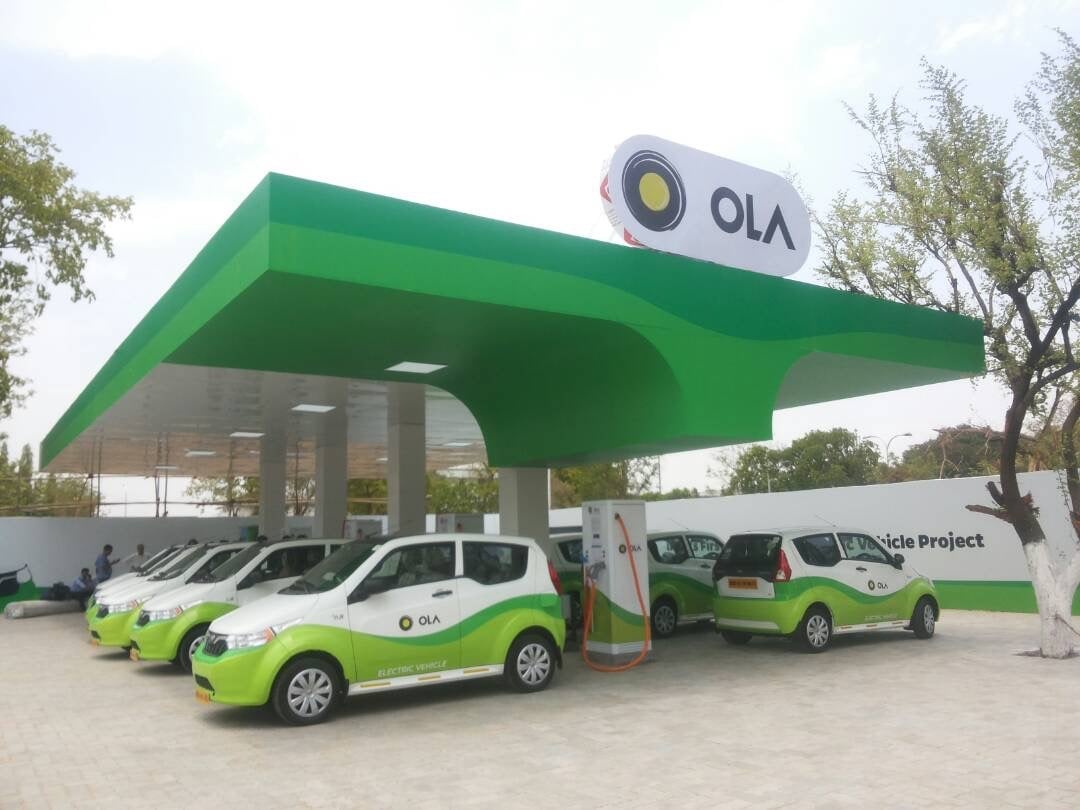Ola’s electric mobility dreams get real
The development of an electric vehicle (EV) industry in India has been stuck in a chicken-and-egg situation for years now. Consumers have hesitated to embrace the environmentally-friendly mode of transportation because of a lack of supporting infrastructure such as charging stations, and companies have held back from investing heavily in the technology because demand remains subdued.


The development of an electric vehicle (EV) industry in India has been stuck in a chicken-and-egg situation for years now. Consumers have hesitated to embrace the environmentally-friendly mode of transportation because of a lack of supporting infrastructure such as charging stations, and companies have held back from investing heavily in the technology because demand remains subdued.
However, there are a handful of companies who have decided to break this limbo and develop an ecosystem of their own. Among them is Bengaluru-based Ola.
In May 2017, the ride-hailing giant partnered with the Indian government and carmaker Mahindra & Mahindra to launch an “electric mass transport project” in Nagpur, a large city in the western Indian state of Maharashtra. Ola initially invested Rs50 crore ($6.96 million) in the project to build charging infrastructure, and bring 200 electric vehicles—including cars and auto-rickshaws—on to its app.
The project proved so successful that in March 2019 Ola spun out a separate EV business: Ola Electric Mobility (OEM). Within a couple of months, OEM achieved unicorn status when it raised $250 million from SoftBank.
“No one knows how to make electric vehicles viable and the real way to figure that out is to try,” believes Anand Shah, co-founder of OEM. Here’s a timeline of Ola’s experiments with EVs and OEM’s milestones so far:
While there has been some criticism about the recent trend of Indian unicorns spinning out internal units and making them $1 billion ventures, experts believe Ola’s decision to separate the EV arm was wise.
New packaging
Ola says the spin-off was mainly because the company saw the need to have a team with a single-minded focus and the skills to build an EV business. “The idea of EVs is a significant undertaking that requires a different kind of talent that understands vehicles, batteries—a different group of people than the tech-heavy IT platform Ola,” Shah told Quartz India. “This is a long game where we want to give OEM the proper environment to get the basics right.”
Experts believe OEM also has a lot to do with making money too.
“The ride-hailing business has very poor economics. Electric mobility, especially with entry-level products like e-rickshaws or e-autorickshaws, solves a major customer pain point and has the potential to turn profitable much faster,” said Puneet Manchanda, a professor of marketing at the University of Michigan’s Ross School of Business. “A spin-off increases focus on the mission and plays well to most stakeholders—government, investors, employees, etc.”
The Indian government has decided to make it mandatory for radio taxi players such as Ola and Uber to have at least 40% of their fleets electric-powered by 2026. To support the ecosystem, the Ministry of Finance is looking to spend around Rs4,000 crore ($600 million) over five years to upgrade the country’s charging infrastructure. The government has also reduced tax rates for EVs, chargers, and charging stations.
What works in OEM’s favor is the fact that despite being a fairly new venture, it enjoys the perks of Ola’s sterling reputation—”operations on the supply-side and brand awareness on the demand-side, both for funds and funding sources,” said Manchanda.
Covering the ground with three-wheelers

Among Ola’s biggest learnings from the two-year-long EV pilot in Nagpur was that four-wheelers aren’t the key to cracking the e-mobility market in India. Instead, early adopters have been more interested in two- and three-wheelers. They do well covering shorter ranges and require smaller batteries.
Currently, Ola has over a 1,000 EVs spread across Nagpur, Bengaluru, Delhi, and Gurugram, most of which are two- and three-wheelers.
Getting four-wheeled electric vehicles on the road will still take a while because of a shortage of car models and fast-charging infrastructure, the company said. “On the electric rickshaw front, the policy environment as well as the business case is strong, and there are several manufacturers with products (who are) eager to scale up quickly,” said Anup Bandivadekar of the International Council on Clean Transportation (ICCT), a Washington DC headquartered non-profit.
Indeed, India’s electric three-wheeler sales grew 21% year-over-year to 630,000 in 2018, according to Society of Manufacturers of Electric Vehicles (SMEV). And there is already a large, unorganized e-rickshaw market in India’s northern states, which Ola can benefit from.
Ola’s experiment with e-rickshaws in Gurugram, which it launched in March this year, is particularly instructive.
The e-rickshaw experiment
I visited Ola’s battery-swapping station in Gurugram on a Tuesday (Aug. 27). Between noon and 12:30pm, I counted over 20 e-rickshaws going in and out of the premises.
Devendra Kumar, an e-rickshaw driver who is originally from Bihar, told me that he found out about the project while chatting with fellow e-rickshaw drivers, and got on Ola’s platform a month ago.

“I come here and swap out my battery three or four times a day for Rs200. Earlier, the lead-acid battery would let me run my vehicle for just one battery’s charge-worth,” he said.
Typically, charging e-rickshaws is a six- to eight-hour ordeal, and on top of the charging cost, there are parking charges. Under its battery-swapping pilot, Ola takes e-rickshaws fitted with lead-acid batteries and replaces them with lithium-ion ones instead. Once the refurbishment is done, e-rickshaw drivers come in with their vehicles, return their drained batteries, and swap them out for new ones that are charged at Ola’s facility. Each battery is tracked with QR codes.
Ola’s plan seems well thought out as lithium-ion batteries have many advantages over lead-acid ones.
Here’s what the two look like:
However, the technology still needs honing—battery life can be improved—and drivers say they have yet to see tangible benefits from Ola’s initiative. Kumar and another driver, Arun, say they haven’t seen much difference in their earnings since making the switch about a month ago. But over time, not having to keep recharge their e-rickshaws for hours on end will give them a bigger window of opportunity to go out and earn.
“Battery-swapping uses a lot less land to serve a larger number of vehicles. It takes away the biggest inconvenience of EV’s—the charging time,” Shah of OEM said. “The question is how to make them at a competitive cost with alternatives like CNG auto-rickshaws, lead-acid e-rickshaws.”
Apart from the Sarhol location that I visited, Ola has set up three other smaller charging stations around Gurugram. Next, it has its eyes set on Delhi, which has 150,000 e-rickshaws.
The roadblocks
It is no surprise that Ola is leading India’s EV revolution because it has the scale to spread the cost of the technology.
“Electric vehicles are capital intensive but save operational expenses due to better energy efficiency of battery-operated vehicles,” Ravi Gadegapalli, an independent consultant for public transport policy, told Quartz. “So, commercial vehicles are better suited for EVs as they operate more kilometers per day and hence reach break-even early. Given Ola’s extensive diesel and CNG fleet network, they will have captive users to convert to EVs once it makes business sense.”
Aside from cab fleets, other high-mileage services like shuttles and school buses are also low-hanging fruit in the sunrise sector.
But the infrastructure shortage in India still remains a big challenge for Ola’s EV endeavor.
There are only 150 public EV chargers in India currently. In comparison, the US has over 20,000 with more than 68,800 connectors, and China has 770,000 EV charging stations.
Moreover, since India’s power grids are already overburdened, governments need to get creative about how to power EV chargers. For instance, Maharashtra’s government announced a variable tariff structure called time of use that charges less for power during certain times of the day when the demand is typically low in an effort to shift consumption by EVs to off-peak hours. In addition, power prices also need to be lower to about Rs5 per kilowatt-hour (kWh) compared with the current Rs17.7 to make it economically feasible, Ola said in a report about the Nagpur pilot.
“EVs are not necessarily environment-friendly given that most grid power is derived from fossil fuels, and Indian grids typically have over a quarter in T&D (transmission and distribution) losses,” said Prasanto K Roy, an independent policy consultant, and tech writer.
Another barrier is convincing drivers to switch to EVs, given how price sensitive Indians are. To solve this problem, Ola “helps drivers access loans, which is a crucial requirement for adoption of EVs, which are generally 50-100% costlier than conventional vehicles,” said Gadegapalli, a former transport program manager at the Shakti Sustainable Energy Foundation in Delhi.
All in all, Ola’s interim goal of 10,000 vehicles seems achievable, but a million EVs by 2021 is a tall order. However, says Shah, the goal is “real for us.”